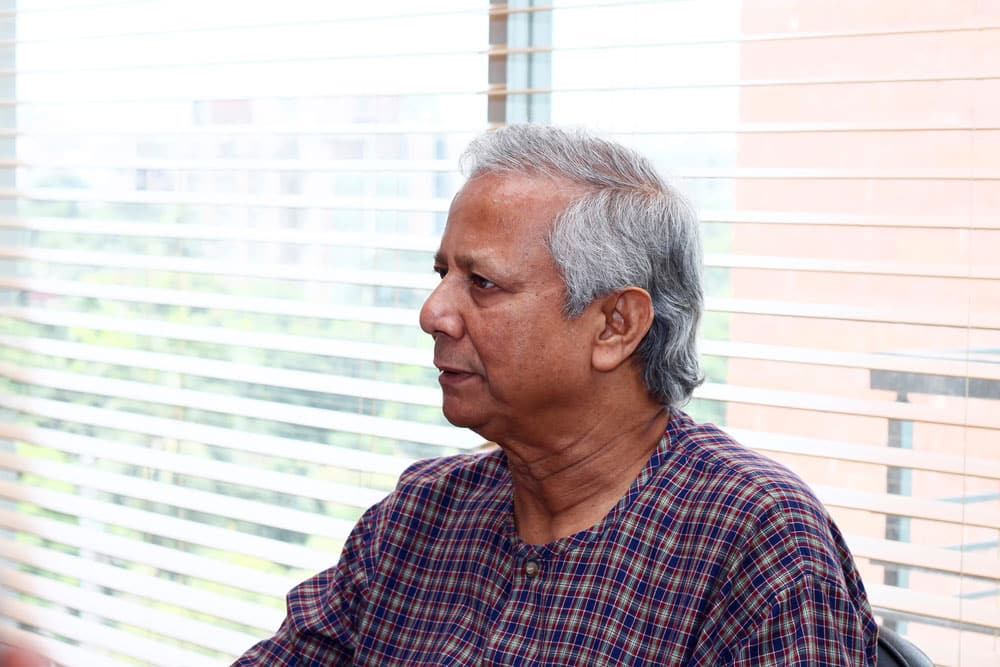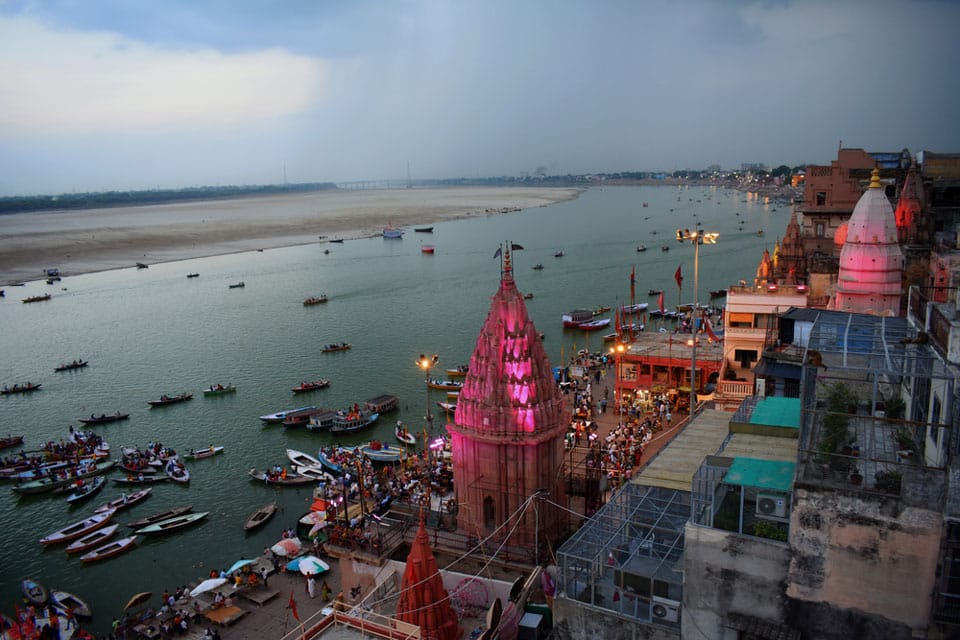The rich and complex history of Mediterranean Europe and the Middle East is a captivating tale of centuries-long conquest, marked by the rise and fall of many empires. The lands that these empires seized now bear the indelible imprint of their legacy. The cities that exist in these regions have stood witness to the reigns of Assyrians, Babylonians, Persians, Romans, Arabs, Ottomans, and others, each leaving their own unique mark on the landscape and the people who inhabit it.
Many cities have continued to be inhabited despite changing rulers. Positioned along trade routes, some on the coast, and others inland, these cities have stood the test of time. In this compilation, we’ll take a look at the oldest continuously inhabited cities in the world. Most of them are located in the Middle East, which is the birthplace of agriculture and the home of civilizations that flourished during the Neolithic era.
Facing invasions, earthquakes, and natural calamities over centuries, some ancient cities, initially founded by the Phoenicians, a maritime Semitic-speaking people in the Levant region, have been resilient. Layer upon layer of history envelops these venerable cities. Some retain their original Hellenistic urban layouts, offering a glimpse into the past. Amid contemporary structures, remnants of ancient architecture persist, showcasing historic fortresses, aqueducts, temples, baths, and castles that narrate tales of a rich and enduring legacy.
Below is a list of the 26 cities that have been continuously inhabited for the longest period of time:
- Jericho, West Bank
Established: 11,000 – 9,300 B.C.
Jericho, situated in the West Bank, not only holds the distinction of being the world’s oldest continually inhabited city but also boasts the status of the first known walled city. Archaeologists have uncovered stone fortifications and towers dating back to 8000 BC. These walls constructed to shield the city from flooding due to Jericho’s below-sea-level location, witnessed the city’s endurance through earthquakes, fire, and warfare. - Damascus, Syria
Established: 10,000 – 8,000 B.C.
Once a vibrant trade hub celebrated for its swords and lace, Damascus has traversed numerous cultural epochs, retaining influences from Greek, Roman, Byzantine, and Islamic civilizations. The remarkable 8th-century Great Mosque of the Umayyads is among the well-preserved ancient monuments. - Ray, Tehran, Iran
Established: 6,000 B.C.
Nestled within modern-day Tehran, Ray holds historical significance for Zoroastrians. Formerly known as Rhages and Arsacia, Ray faced destruction multiple times during the Middle Ages by invading Turks, Arabs, and Mongols. Notable sites, including Cheshmeh-Ali, a neolithic-era recreational center and spring, endure, offering glimpses into Iran’s famed Persian rug-washing tradition. - Erbil, Iraq
Established: 6,000 B.C.
An elevated citadel in the heart of contemporary Erbil, built on a mound of ancient debris dating back to the 5th millennium BC, narrates the history of Arbela. Conquered by Assyrians, Seljuks, and Ottomans, Erbil stands as a testament to ethnic and religious diversity, hosting Assyrians, Armenians, Arabs, Kurds, and Iraqi Turks. - Aleppo, Syria
Established: 6,000 – 5,000 B.C.
Strategically positioned on major trade routes, including the Silk Road, Aleppo served as a pivotal metropolitan center for centuries. Ruled by diverse empires such as the Akkadians, Hittites, Assyrians, Romans, and Ottomans, Aleppo’s ancient walled city and monuments, though enduring, have faced damage during the Syrian civil war. - Istanbul, Turkey
Established: 5,500 – 3,500 B.C.
Formerly Lygos, Byzantium, and Constantinople, Istanbul holds a rich history as the ancient western world’s largest city. Notable sites include the Hagia Sophia cathedral and Topkapi Palace, alongside subterranean ruins in basements. - Faiyum, Egypt
Established: 5,000 B.C.
Transforming from a desolate desert basin to fertile land due to the Nile river’s diversion, Faiyum witnessed the rise of early agricultural settlements and the ancient Egyptian city of Shedet. Initially a wilderness and later an upper-class residential area, Faiyum briefly faced ruin from drought and overuse. - Athens, Greece
Established: 5,000 B.C.
Athens, adorned with the iconic Acropolis rising from a rocky outcrop, traces its Neolithic origins. The Acropolis houses the remnants of the Parthenon, the ancient temple dedicated to the goddess Athena, influencing the city’s nomenclature. Renowned as the intellectual hub of ancient Greece, Athens nurtured legendary figures like Socrates and Aristotle. - Byblos, Lebanon
Established: 5,000 B.C.
Originally the Phoenician port city of Gebal, Byblos gained fame for its timber, shipbuilding, and papyrus trade, earning its name from the Greek word for book. This ancient city holds the earliest discoveries of the Phoenician alphabet. Its prominence declined post the Roman Empire’s fall, enduring invasions and damage from both Arabs and Crusaders. - Shush, Iran
Established: 5,000 – 4,000 B.C.
Present-day Shush envelops the ancient city of Susa, inhabited by the Sumerian, Elamite, Achaemenid Persian, and Parthian Empires. Once a prosperous metropolis with skilled artisans, Susa faced ravages by Hammurabi of Babylon, Alexander the Great, and the Mongols, ultimately succumbing to ruins. - Jerusalem, Levant region
Established: 4,500 – 3,400 B.C.
A city of profound significance to Jews, Christians, and Muslims, Jerusalem has weathered numerous attacks and two destructions. Over its history, it has been occupied by various groups, including the Canaanites, Israelites, Babylonians, Persians, Romans, Arabs, and Ottomans. Despite sieges, the Old City of Jerusalem boasts over 200 historic monuments. - Plovdiv, Bulgaria
Established: 4,000 B.C.
Transforming from a Neolithic settlement to a Thracian city and eventually becoming the capital of the Roman province of Thrace, Plovdiv is now Bulgaria’s second-largest city. As Trimontium, the Roman city featured baths, theaters, and an advanced water and sewage system, some of which have been excavated. The well-preserved Stadium of Philippopolis stands as a testament to its ancient past. - Sidon, Lebanon
Established: 4,000 B.C.
Once a major Phoenician port city renowned for producing purple dye, glass, and intricate embroidery, Sidon witnessed the rule of various conquerors, including the Assyrians, Egyptians, and Ottomans. The Temple of Eshmun, dedicated to the Phoenician god of healing, stands among the city’s enduring ancient sites. - Gaziantep, Turkey
Established: 3,650 B.C.
Boasting historic mosques, an ancient castle, and citadel, Gaziantep has been inhabited since the early Bronze Age. Formerly under Cicilian Armenia’s control, the city harbored a vibrant Armenian community and culture for two millennia until the tragic events of the Armenian Genocide in the early 1900s. - Delhi, India
Established: 3,500 B.C.
As India’s largest city, Delhi has served as the capital for several empires, including the Mughals, enduring multiple destructions and rebuilds. While the Mahabharata links Delhi to the ancient city of Indraprastha, supporting evidence remains sparse. The city hosts impressive tombs and mosques, resonating with its rich historical tapestry. - Luxor, Egypt
Established: 3,200 B.C.
Modern Luxor stands on the grounds of ancient Egyptian Waset, encompassing enduring temple complexes. Waset, capital of Upper Egypt and dedicated to the god Amun, now known as Amun-Ra, featured the revered Karnak Temple. This temple remains a popular tourist attraction, offering glimpses into Luxor’s ancient splendor. - Argos, Greece
Established: 3,000 B.C.
Remnants of Neolithic settlements lay the foundation for Argos, gaining prominence during Greece’s late Bronze Age Mycenaean era. Ancient theaters, tombs, baths, monuments, and a castle continue to grace the contemporary city, showcasing its enduring historical legacy. - Beirut, Lebanon
Established: 3,000 B.C.
Beirut unveils archaeological sites with artifacts spanning Paleolithic, Neolithic, and Bronze Age periods. Initially a Phoenician settlement, the city witnessed Hellenistic, Roman, and Ottoman rule. Despite challenges, Beirut preserves its history, although many Ottoman-era buildings fell during Lebanon’s civil war and recent urban development. - Tyre, Lebanon
Established: 2,750 B.C.
Once a flourishing Phoenician port city with an island trade center and mainland city named Ushu, Tyre thrived on the production of fine purple dye. Roman ruins, including a mosaic road, water cisterns, baths, and an intact Roman hippodrome, stand testament to its illustrious past. - Kirkuk, Iraq
Established: 2,200 B.C.
Modern Kirkuk, a contested area among Kurds, Turkmen, and Arabs, was once the Akkadian and Assyrian city of Arrapha. Its walled citadel still dominates the skyline, preserving a church with intact mosaics and a tomb believed by some to be that of the Jewish prophet Daniel. - Luòyáng, China
Established: 2,000 B.C.
A foundational capital during China’s Xia dynasty, Luòyáng evolved into the Han dynasty’s seat of power. The city’s historical allure includes the Longmen Grottoes, featuring carved limestone caves adorned with tens of thousands of Buddha statues. - Balkh, Afghanistan
Established: 1,500 B.C.
Once a Zoroastrian city and pivotal Silk Road trade center, Balkh boasted camels, grapes, oranges, skilled craftspeople, and philosophers. Devastated by Genghis Khan in 1220 AD, the city has slowly recovered, preserving 14th and 15th-century architectural gems. - Thebes, Greece
Established: 1,400 B.C.
A Bronze Age settlement, Thebes played a prominent role in Ancient Greece’s conflicts until Alexander the Great’s destruction in 335 BC. Restored post-destruction, it later flourished as a Byzantine silk production center, now a small market town with remnants like the Cadmea citadel. - Larnaca, Cyprus
Established: 1,400 B.C.
Originally Kition, a coastal Greek city, Larnaca witnessed Phoenician, Assyrian, and Egyptian influences. Post-earthquake reconstruction in the 4th century AD relocated the city slightly south. Modern Larnaca, famed for its palm-lined coast, preserves historical monuments, including an aqueduct, castle, and mosque. - Cádiz, Spain
Established: 1,100 B.C.
Regarded as Western Europe’s oldest city, Phoenician-founded Cádiz, or Gadir, endured various rulers. Its 16th-century fortifications stand as a testament to its rich history, shaped by Carthaginians, Romans, Visigoths, Moors, and more. - Varanasi, India
Established: 1,000 B.C.
Nestled along the Ganges river, Varanasi’s modern city conceals ancient ruins dating back to 1,800 BC.
A bustling center of industry in antiquity, Varanasi boasts historical stupas, temples, and a cultural significance deeply rooted in Hindu and Buddhist mythology.
Have you read?
The World’s Richest People (Top Billionaires, 2023).
Revealed: Countries With The Best Health Care Systems, 2023.
Top Most Valuable Coins For Collectors Across The Globe.
The World’s Most Influential CEOs And Business Executives Of 2023.
Which are the healthiest countries in the world for 2023?
Add CEOWORLD magazine to your Google News feed.
Follow CEOWORLD magazine headlines on: Google News, LinkedIn, Twitter, and Facebook.
Thank you for supporting our journalism. Subscribe here.
For media queries, please contact: info@ceoworld.biz






































































